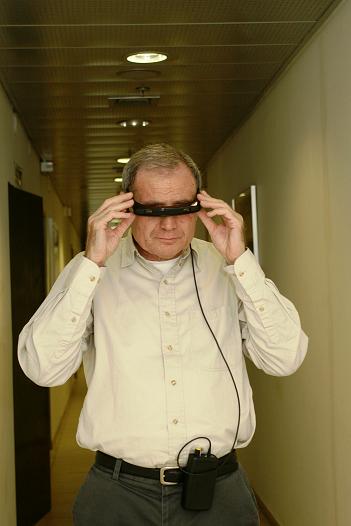The device also helps Parkinson's patients

In the photo: Professor Yoram Baram demonstrates the new device
The Technion researcher, Professor Yoram Baram from the Faculty of Computer Science, developed a device with auditory feedback that improves the walking of multiple sclerosis patients, and also helps the walking of Parkinson's patients. This is a new version of a vision device developed by Professor Baram about ten years ago, which improves patients' walking by drawing the floor in front of them like a chessboard.
Professor Baram collaborated with Professor Ariel Miller from the Rappaport Faculty of Medicine at the Technion and from the "Carmel" Medical Center in testing the effect of the device on the quality of walking of MS patients. Their work was recently published in the important scientific journal Journal of the Neurological Sciences.
"We discovered that auditory feedback significantly helps the walking of multiple sclerosis patients, and also the walking of Parkinson's patients, although to a somewhat lesser extent," says Professor Baram. "The auditory feedback helps the patients, because the quality of walking is expressed in the sound series that the person hears while walking. A healthy person has other tools to control the quality of his walking, such as sensory feedback coming from the muscle nerves, reporting to us the muscle control function and telling us if we are activating our muscles correctly. This feedback is impaired in Parkinson's patients, the elderly and multiple sclerosis patients. Hearing helps us regulate our walking at a regular pace. The device we built is mounted on the belt, it's the size of a 'Walkman', it measures body movements, processes them using a computer and sends the signal to the ears using headphones."
Compared to the device he developed about ten years ago, Professor Baram says that the vision device has a greater effect on the size of the step, while the hearing device has a greater effect on the walking speed. Now the two devices are combined, and the patient wears a vision device on his eyes to which headphones are also connected. "Our new findings also contain the possibility of understanding the processes that take place in the brain, in the processing of sensory information that reaches it," he adds.
The innovative device is already being used in several medical centers in Israel and the USA.
